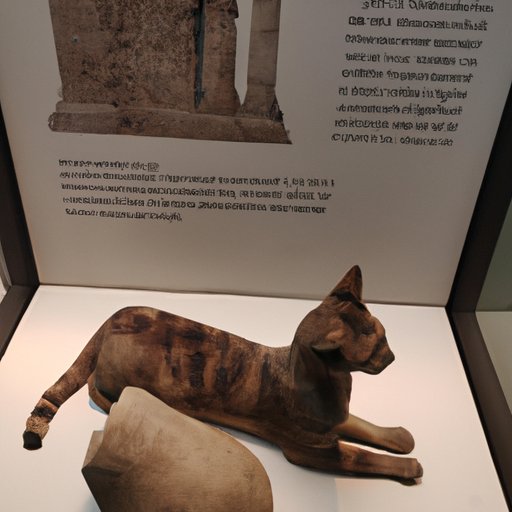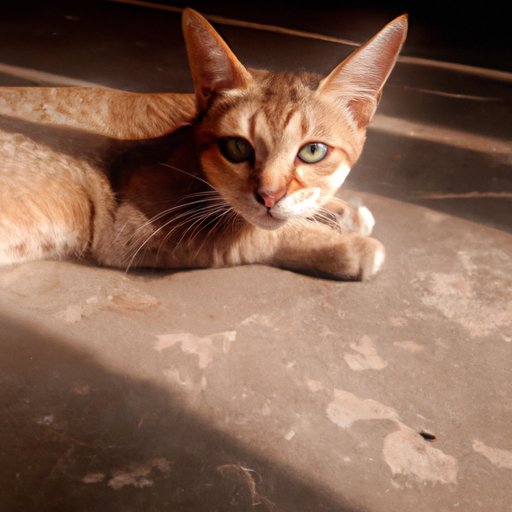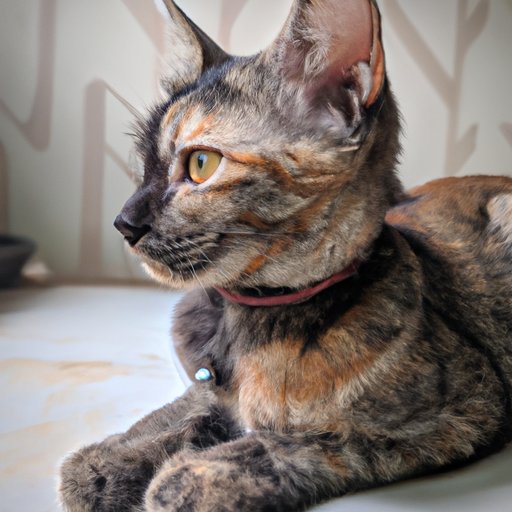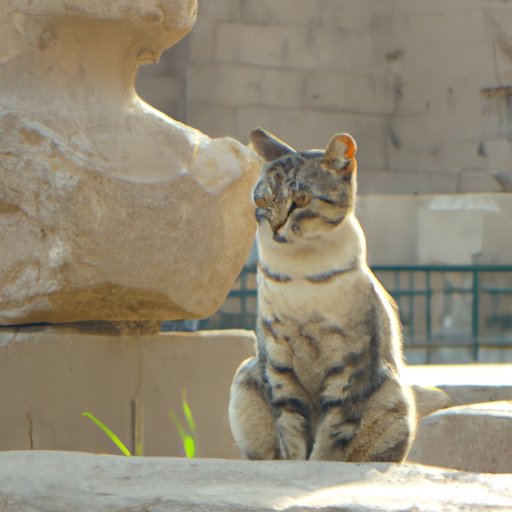Introduction
Cats have been a part of human society for thousands of years, but who was the first to bring these furry felines into our lives? This article seeks to answer that question by exploring the ancient origins of feline domestication. We will look at historical evidence, physical and behavioral changes over time, and the role of cats in ancient societies to uncover the truth behind this fascinating story.
An In-depth Look at the Ancient Origins of the Cat
The earliest known evidence of cats living alongside humans dates back to around 9500 BC in the Near East. These early cats were likely wild animals that had been scavenging for food near human settlements. Over time, some of these cats began to stick around and form relationships with humans. Eventually, this led to the domestication of cats.
Archaeological evidence suggests that cats were domesticated in the ancient Near East, most likely in the region now known as Egypt. Cats were seen as sacred creatures in ancient Egyptian culture, and it is believed that they were first domesticated as a way to protect grain stores from rodents. Cats were also seen as protectors of the dead and were often mummified and buried alongside their owners.
Evidence of cats spread throughout the Mediterranean region during the Bronze Age. Cats were popular among the Greeks and Romans, and were even depicted in art and literature. Cats were also kept as pets in other ancient cultures such as those in China, India, and Africa.
Tracking Down the History of the Cat: Who Was the First to Domesticate This Feline?
The exact origin of the domestic cat is still a matter of debate. Here, we’ll explore some of the theories about who may have been the first to domesticate this feline.
Ancient Egyptians
The ancient Egyptians are often credited with the domestication of the cat. Cats were considered sacred animals in ancient Egypt, and there is archaeological evidence that suggests cats were kept as pets as far back as 4000 BC. The goddess Bastet was often depicted in art as having the head of a cat, and cats were mummified and buried alongside their owners. To this day, cats remain popular pets in Egypt.
Greek and Roman Cultures
Cats were also popular in ancient Greek and Roman cultures. They were often used to hunt vermin, and were sometimes even kept as pets. The Roman author Pliny the Elder wrote about cats in his Natural History, describing them as “the most sagacious of beasts.” He also noted that cats were often kept as pets in wealthy households.
Other Ancient Civilizations
Cats were also popular in other ancient civilizations, including those in China, India, and Africa. In China, cats were kept as pets as early as 1000 BC. In India, cats were believed to have divine powers and were often kept as temple guardians. In Africa, cats were kept as pets and used to catch mice and rats.

A Historical Perspective on the Development of the Cat
Over time, cats have undergone both physical and behavioral changes due to their domestication. Physically, cats have become smaller and less aggressive than their wild ancestors. They have also developed longer lifespans and are less prone to disease. Behaviorally, cats have become more social and affectionate with humans.
In addition, cats have developed a greater range of vocalizations, allowing them to communicate better with humans. Cats have also become less independent and more reliant on humans for food and shelter. These changes in behavior can be attributed to the strong bond that has formed between cats and humans over time.

The Fascinating Tale of How Cats Came to Be Domesticated
The exact circumstances of how cats became domesticated is unknown, but there are several theories that attempt to explain this process. One theory suggests that cats were attracted to human settlements because of the abundance of rodents, which provided them with an easy source of food. Over time, some cats became less fearful of humans and began to form relationships with them. This eventually led to the domestication of cats.
Another theory suggests that cats were attracted to human settlements because of the warmth and safety they provided. Cats were drawn to the fires that humans lit to keep warm, and they soon realized that they could benefit from living near humans. This theory suggests that cats were not actively domesticated, but rather chose to live near humans of their own accord.
Exploring the Ancient Beginnings of the House Cat
Cats have been a part of human society since ancient times. They were kept as pets, used to hunt vermin, and were even worshipped as gods. Cats were seen as protectors of the dead in some cultures, and were often mummified and buried alongside their owners.
Cats were also seen as religious symbols in many ancient cultures. In Egypt, cats were associated with the goddess Bastet, and in India, cats were believed to have divine powers. In Greece and Rome, cats were seen as symbols of fertility and rebirth, and were often depicted in artwork and literature.

Uncovering the Mystery of Who Brought the Cat into Human Society
The exact origin of the domestic cat is still a matter of debate, but it is likely that cats were first domesticated in the ancient Near East, most likely in Egypt. Cats were seen as sacred creatures in this region, and it is believed that they were first domesticated as a way to protect grain stores from rodents. Evidence of cats spread throughout the Mediterranean region during the Bronze Age, and cats were kept as pets in other ancient cultures such as those in China, India, and Africa.
It is unclear who first brought cats into human society, but it is likely that cats were attracted to human settlements due to the abundance of food and the warmth and safety they provided. Over time, some cats became less fearful of humans and began to form relationships with them, leading to the domestication of cats.
Conclusion
Cats have been a part of human society for thousands of years, but the exact origin of the domestic cat is still a matter of debate. Evidence suggests that cats were first domesticated in the ancient Near East, most likely in Egypt. Cats were seen as sacred creatures in this region, and it is believed that they were first domesticated as a way to protect grain stores from rodents. It is unclear who first brought cats into human society, but it is likely that cats were attracted to human settlements due to the abundance of food and the warmth and safety they provided.
This article has explored the ancient origins of feline domestication in order to uncover the truth behind this fascinating story. By looking at historical evidence, physical and behavioral changes over time, and the role of cats in ancient societies, we can begin to piece together the mystery of who first brought cats into human society.
(Note: Is this article not meeting your expectations? Do you have knowledge or insights to share? Unlock new opportunities and expand your reach by joining our authors team. Click Registration to join us and share your expertise with our readers.)
